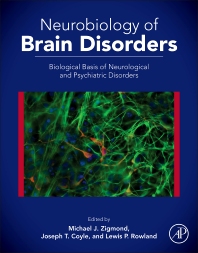This is a textbook aimed at scientists, students, post doctoral and research fellows in neurology, neurobiology and psychiatry. Notably, the royalties earned from its sales are to be spent on the noble cause of making the book available, free of cost, to trainees in the developing world.
The book throws light on the often mysterious biological basis of neurological and psychiatric disorders. It has a very detailed list of the contributors and extensive cross referencing to published research in peer reviewed journals. The preface contains an impressive world history of the sciences of psychiatry and neurology.
Treating neurological and psychiatric disorders is a very complex task. This book very clearly explains the interface between neurobiology and disorders of the brain, as important for formulating diagnoses and treatments.
All the chapters of this book are colour coded and the topics are complemented with tables, illustrations, photographs, slides, radiological images and statistics. The sections are well written in easy to understand language catering for readers at various career grades. The topics are well presented, starting from basics and progressing to recent advances. At the end of every chapter, attention is given to unanswered questions in the field, identifying further research challenges.
In Psychiatry, there are chapters on developmental disorders such as ADHD, autistic spectrum disorder, Rett syndrome, diseases of higher function, stress, addictions, sleep disorders, post-traumatic stress disorder, obsessive-compulsive disorder, schizophrenia, depression and suicide.
As a psychiatrist, I would like to reflect on the chapter on pain, as I see many patients with relapses in their psychiatric illness when their pain is not well controlled. Pain may be a neurological condition but in general is seen as a symptom rather than a disease in itself. Pain is a subjective phenomenon, and this further complicates its treatment. It is extremely important to all branches of medicine, not to mention the patients, that pain is understood better and treated more effectively.
From the neurology point of view, myasthenia gravis, muscular dystrophy, spinal cord injury, traumatic brain disease, epilepsy, Parkinson’s disease, Alzheimer’s disease, Huntington’s disease, stroke, prion disease, multiple sclerosis and amyotrophic lateral sclerosis are included in this book. Chapters on infectious and immune mediated diseases of the nervous system (and pain) are additional attractions.
I am pretty sure that my neurologist colleagues will be very interested to know the key role of the brain in response to stress, which may be a psychiatric illness. The brain is the key organ of the stress response as it assesses stressful stimuli, and determines the behavioural and physiological response to stress. The chapter on stress gives a compelling account of the neuroanatomical changes occurring in brain structures, especially in hippocampus and amygdala, and physiological responses in cortisol metabolism, as a consequence of stress. An understanding of the organic processes of the brain that occur with stress provides a basis for pharmacotherapy and non-pharmacological treatment in stress disorder, in particular the insight that depression and anxiety disorders may be seen as a loss of resilience and that this has a bearing on neural plasticity.
Analysis of the burden of neurological disease, the ethical basis of neuroscience, the role of stress in health and health disparities among different races are further, somewhat unexpected, highlights of the book.
This is more of a reference book than a read-through. It is recommended especially for an approach that encompasses the scientific basis of brain medicine in the widest sense.
ACNR 2015;15(4):13. Online 21/09/2015

